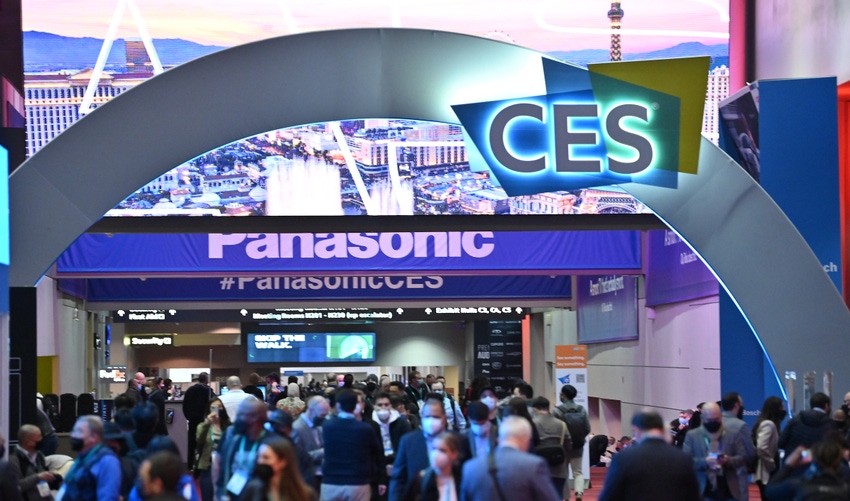As the telecoms and wider tech industries become increasingly intertwined, CES and MWC are starting to look like two sides of the same coin – with the former providing the consumer use cases for advanced connectivity.
January 3, 2023

As the telecoms and wider tech industries become increasingly intertwined, CES and MWC are starting to look like two sides of the same coin – with the former providing the consumer use cases for advanced connectivity.
The Consumer Electronics Show – the mothership of tech events – will once again spread itself all over Las Vegas this week like a massive gadget-spewing octopus after two years of Covid related disruption. It’s a significant event mainly because of its sheer scale and the fact all the tech firms of note will be involved in some way shape or form – though Apple never takes a stand.
It describes itself as ‘the most influential tech show in the world’, and this year organiser CTA says the show footprint will be over 70% larger than it was at the ‘hybrid’ event last year, with 3100 exhibitors showing their wares.
In terms of themes, fancy laptops and other mobile devices are a staple, while connected cars have taken an increasingly prominent amount of floor space in recent years. There will also be a gazillion types of curved TVs which the industry persists in trying to popularise, and a ton of odd stuff as well.
A big reason telecoms types should care about the show concerns the future of how big scale events are run now. In 2021 at the height of Covid CES, like everything else, was written off as a physical event. Last year it was put on as a ‘hybrid show’ – which practically meant a diminished show floor following a series of big name dropouts while the show was cut a day short and many of the announcements were made virtually.
While no one has outright declared victory over Covid, certainly not in China, it’s a very different picture going into the CES 2023. So how the biggest tech event of them all is delivered could serve as a bellwether for other big tech shows this year such as MWC, which while was much more of a full-fat in person event in 2021 than CES was, was still run with a lot of restrictions and it was reduced compared to pre-covid times.
The other reason to keep an eye on CES is that it can be argued it has never been more relevant due to the increasingly symbiotic relationship between telecoms and the wider tech industry.
For those that have never been to CES, it’s hard to communicate just how much is going on in the many cavernous halls of the Las Vegas Convention Centre, as well as a number of hotels, each January. There will be thousands of new products in all the core areas as well as some completely off the wall offerings. These are easy to take the mick out of (fun, too) but one thing you can say for them is they are at least providing tangible applications of next generation connectivity, which is discussed in more general terms as a facilitator for societal and industrial progress at MWC.
Walking the halls of MWC in Barcelona, there will be plenty of conversations about how 5G, 6G, private networks and comms satellites are going to power all sorts of smart home, smart city, smart industry type scenarios – though what that actually looks like in practice can sometimes be left a bit vague.
As well as the grandstanding, sometimes laborious keynotes and talks from big tech firms like Samsung, Sony and AMD (which will often feature the same topics MWC is built around such as 5G, IoT, or autonomous driving), the show floor of CES is where you can see the world’s start-ups playing about with practical applications for the better connectivity the telecoms industry is concurrently espousing the benefits of.
It’s a petri dish of weird and wonderful gizmos, and while a lot of them will never reach the consumer or are otherwise dead ends, if and when that elusive killer use case for consumer 5G emerges, it’s a good bet it will do so on the floors of CES.
When it comes to progressing telecommunications technology, if MWC provides the ‘how’, CES could be increasingly said to be dealing with the ‘why’ – whether that’s through showcasing autonomous cars, cutting edge consumer end gadgets, metaverse paraphernalia, or some random lightbulb that measures your heartbeat for you.
Throw in on top of that the recent trend which has seen many telcos appear to want to pivot to become ‘techcos’ and start dabbling in all sorts of things traditionally left to wider tech such as software development, that firms like Samsung and Intel could end up playing a larger part in the nuts and bolts of building telecoms infrastructure with the rise of Open RAN, and the fact many operators think big tech should be funding network builds anyway, and it feels as if there is less of a distinction between the two industries than ever before.
Stay tuned to Telecoms.com for all the key updates from CES 2023 this week.
Get the latest news straight to your inbox. Register for the Telecoms.com newsletter here.
About the Author(s)
You May Also Like








.png?width=300&auto=webp&quality=80&disable=upscale)


_1.jpg?width=300&auto=webp&quality=80&disable=upscale)


.png?width=800&auto=webp&quality=80&disable=upscale)